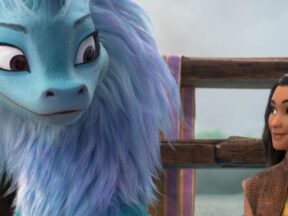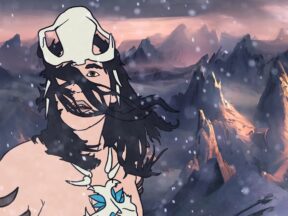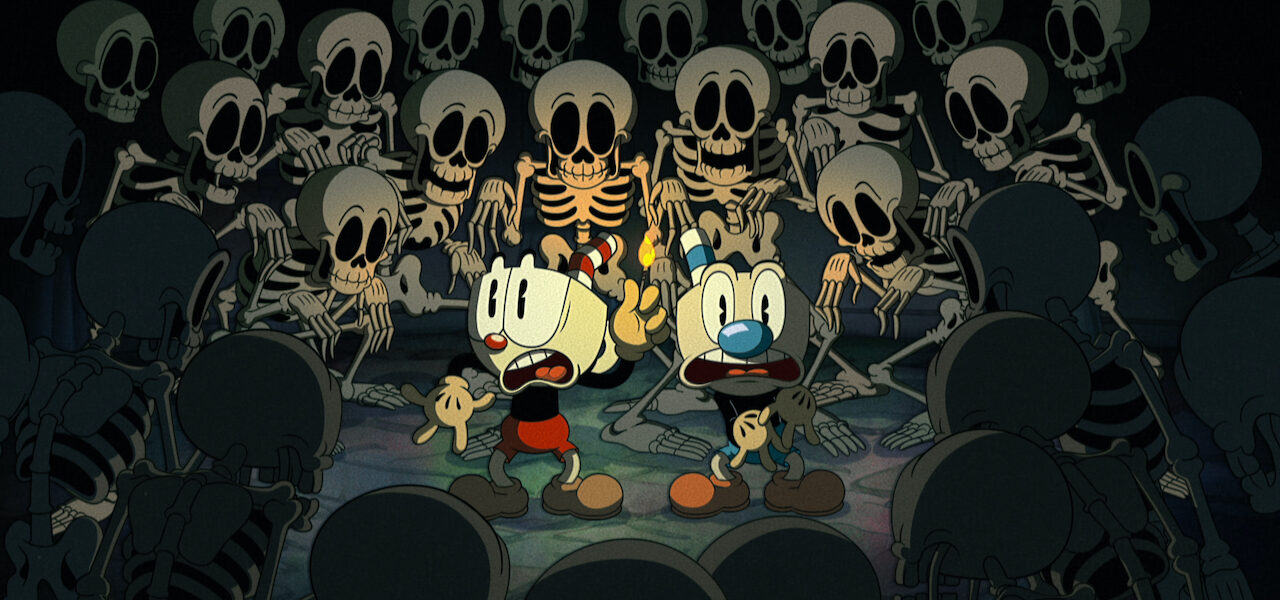
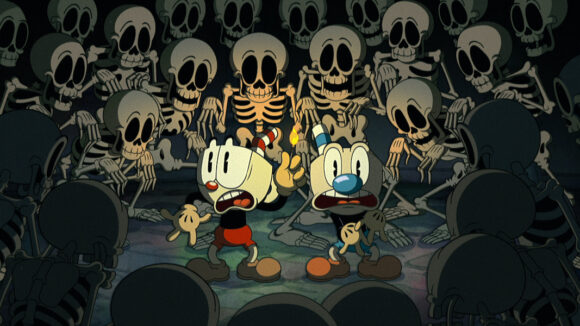
The ‘Cuphead Show’ Roundtable: Netflix ‘Didn’t Know The Trouble We Could Run Into’
“The last thing we wanted to do was the bargain-basement version of the game. We knew we couldn’t do that: the cheap crappy tv version.”
Dave Wasson, executive producer of Netflix’s The Cuphead Show, was conscious of the risk inherent in adapting the acclaimed run-and-gun game Cuphead. With its hand-drawn animation cycles and true watercolor backgrounds, the game has famously high production values. The crew on The Cuphead Show would have to emulate that style over a season’s worth of episodes.
Ahead of the show’s launch tomorrow, INBTWN Animation held a roundtable with its core team: game creators Chad and Jared Moldenhauer, fellow executive producers Wasson and C.J. Kettler, co-executive producer Cosmo Segurson, and art director Andrea Fernandez. Watch them speak to INBTWN, the exclusive online event partner of Cartoon Brew, below:
The Cuphead Show is a love letter to 1930s animation. So was the game, and so, from the start, it begged to be developed into a show.
But the notion of a full series hadn’t really occurred to the creators, brothers Chad and Jared. At most, they thought it could be turned into a Youtube short. “It always was just something lingering in the back of our heads, like, ‘This would be weird, these characters match what could be a cartoon short,’” recalls Jared.
But when Cuphead came to Kettler’s King Features, which now represents the property for licensing, she knew it had potential: “It was so obvious to me that these were characters that we could bring into the television world. I had just come off producing Carmen Sandiego” — another game adaptation — “with Netflix, so it seemed like the right place to come with the show.”
Once Netflix had committed, Wasson (director, Disney’s Mickey Mouse shorts; creator, Time Squad) and Segurson (director, Rocko’s Modern Life: Static Cling) came onboard after what Wasson describes as an “extensive audition process.” They assembled their team and then began to break the game down, aiming to develop the title character and his brother Mugman, who don’t speak in the game, into fully-fledged protagonists of a show.
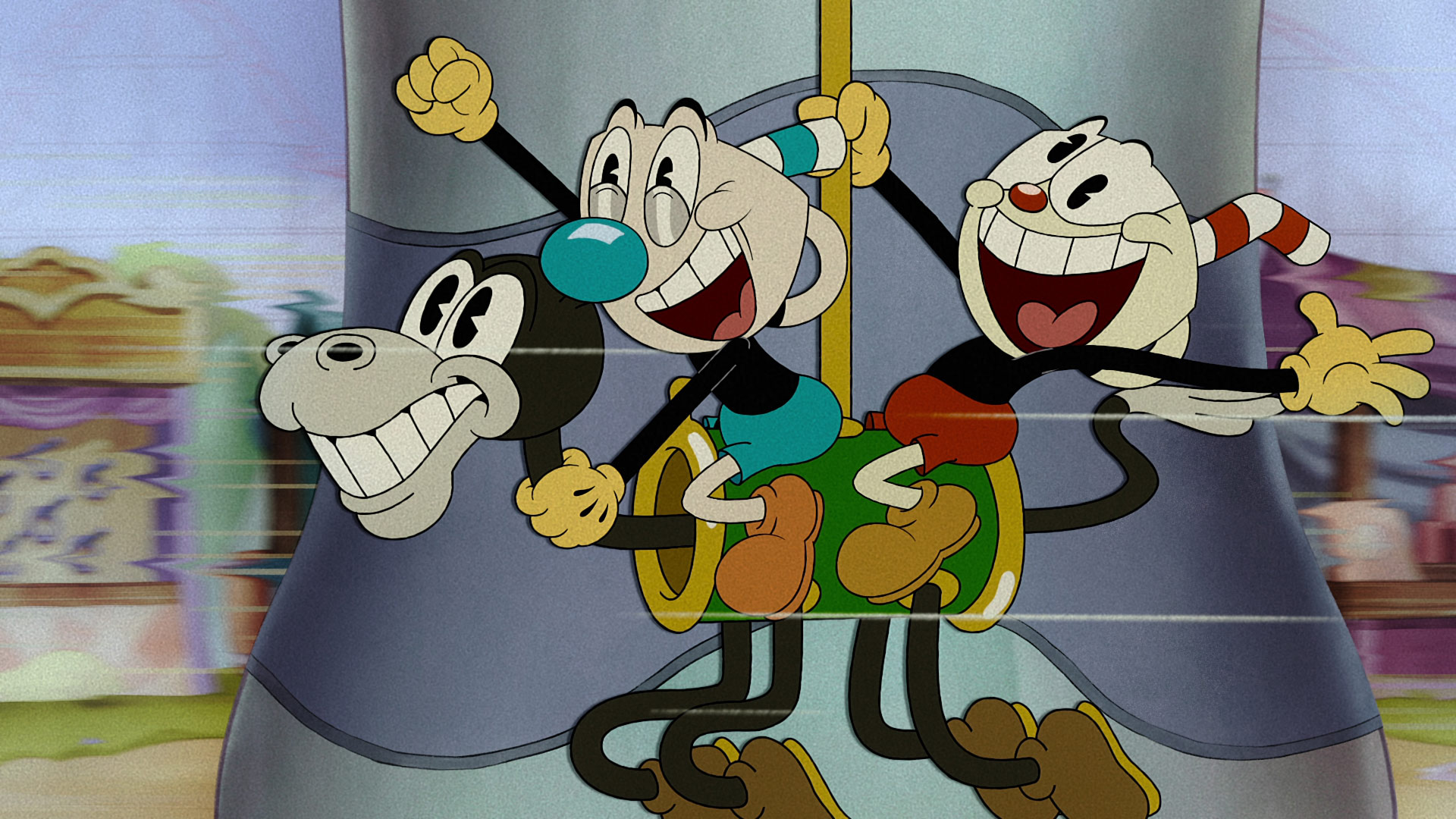
Segurson notes the creative freedom they had here. While developing the show, he ad-libbed dialogue with Wasson to feel out who the characters are. They would check with the Moldenhauers what was and wasn’t in character for Cuphead and Mugman, resulting in a list of “do”s and “don’t”s. For a scene in which Cuphead’s clothes blow off, the creators were adamant: no naked butts.
Rather than replicate the game’s pencil-on-paper approach, the animators — at Lighthouse Studios in Kilkenny, Ireland — used rigged 2d puppets in Toon Boom Harmony. Still, Wasson felt it was important “to try and make it as much like traditional 2d animation as possible.”
His experience on the recent Mickey Mouse shorts, also produced with Harmony, revealed the key to achieving this: “The thing that I learned pretty early on was: the way you can make it look more like not just puppets is that you introduce as many new drawings into it as you possibly can. We called those special poses. Anything that’s more extreme or exaggerated as a drawing, we would do a special pose of. We just had a very high drawing count and we would have our studio add those to the rigs.”
The team dug deep into 1930s animation, drawing inspiration from Fleischer and Disney shorts such as Popeye the Sailor meets Sinbad the Sailor (1936), Swing You Sinners! (1930), and Music Land (1935). They also looked at live-action reference, including Hal Roach comedies like Our Gang or Laurel and Hardy. They would screen cartoons in the morning to steep the whole crew onboard in the visual direction of the show.
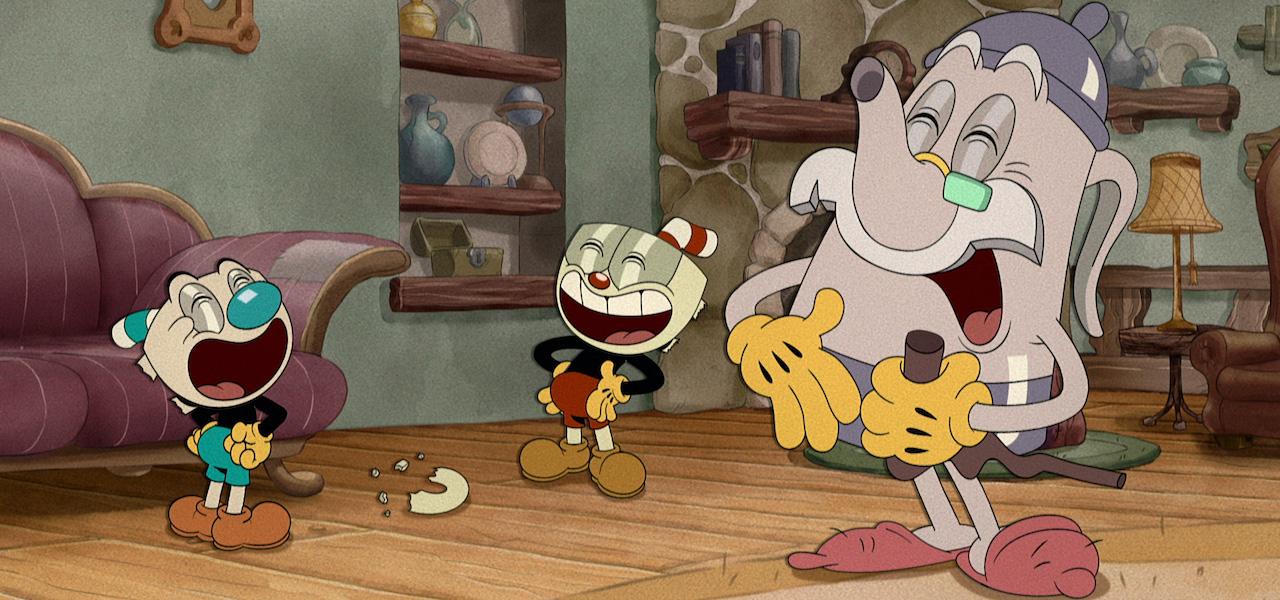
Evoking a classical art direction also posed a challenge, explains Fernandez (whose credits as art director include Unikitty!). A large number of backgrounds had to be created, digitally aping the lush watercolor look of the game, all on a tv budget. “It took about six to eight months just to figure out if we could do it,” she says.
While 1930s cartoons were a key reference for Fernandez’s team too, she looked beyond the films to the original development artwork created for them. “It was important that we were looking at it through the lens of: what would the concept art have translated to now, in the modern day, and not have all the filter of age that translation of video to film and digitizing has done to that original color?”
In other ways, The Cuphead Show reflects modern sensibilities. For one thing, viewers today expect more complex characters. Wasson says, “I think a lot of the early 1930s stuff, they just have characters in cycles and audiences at that time were like, ‘Wow, things are moving onscreen.’ The novelty of that was just incredible, but our audiences have evolved, so that you need to see emotions and understand how a character is feeling about a situation.” This had to be conveyed through the animation as well as the scripts and voice acting.
Doing justice to Cuphead was always going to be a tall order — especially with a team which, according to Fernandez, was no bigger than the average tv production. It helped that Netflix Animation “was new enough that they didn’t know the trouble we could run into,” she says. A more established studio “might have been scared off.”

